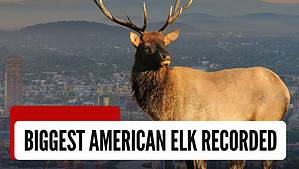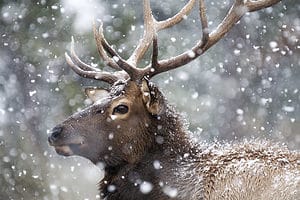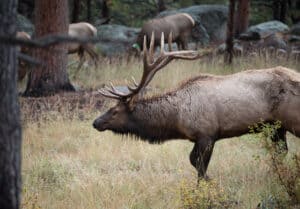Idaho has a rich and diverse collection of animals that inhabit its wide, open spaces. The American elk is one of the biggest and most stunning animals calling the state home. Its iconic stature gets replicated in photos, statues, home furnishings, and countless touristy gifts.
Additionally, the American elk is a highly sought-after prize for hunters. The abundant meat supply and enormous antlers ensure many people vie for the annual tags. And elk hunting is a viable method for states to control the rapidly growing herds.
Many organizations track the size of elk taken during each hunting season. And one of the states that have consistent and impressively large elk is Idaho. Below we look at exactly how big the largest American elk caught in Idaho is.
American Elk
The magnificent elk (Cervus canadensis) are members of the Cervidae family. They live in high meadows, forests, and sagebrush-covered deserts. Elk are also known as wapiti, from the native American Shawnee and Cree word waapiti, meaning “white rump.”
Elk migrate every summer, typically up to high mountain meadow areas. During this period, female elk (cows) give birth. Then, in early fall, the rut (mating season) occurs. They then return, as a herd, to lower elevations during winter months. Bull elk often stand up to 9 feet tall, thanks to their enormous antlers.
The massive animals used to roam across the majority of North America. However, their population got reduced over the years due to hunting. And the remainder retreated to remote areas like the mountains of Colorado, Yellowstone, and Idaho.

American elk move to lower elevations in winter.
©Bradley Wakoff/Shutterstock.com
American Elk in Idaho
The elk population in Idaho is healthy enough to support approximately 20,000 elk harvested annually. The state has a stable and steadily increasing population, with roughly 107,000 elk. Wildlife officials have recently discovered that the state’s elk population is spreading to areas it hasn’t historically lived in. So they are taking the time to study the herd movements to understand their patterns better.
State officials believe that the shift has multiple underlying factors. First, wildfires have impacted foraging, pushing all animals into new grazing and hunting areas. However, that is not the only factor influencing the elk movement. Agricultural regions are tempting for wildlife, including elk. Many farmers have reported increased crop damage due to elk and deer.
Historians and wildlife officials believe that the current elk level surpasses the historical population. However, throughout the late 1900s, conservation efforts resulted in a growing elk herd throughout the state.

There are over 100,000 American elk living in Idaho.
©Virrage Images/Shutterstock.com
What is the Largest Elk Caught in Idaho?
According to the state of Idaho, the record holder for the largest elk caught in Idaho belongs to Peter J. Orazi Jr. Orazi got his American Elk in Latah County in 1970. But the records from the Boone and Crockett Club differ. Their records show that the record still belongs to Orazi, only for a different year. They list the record year as 1977. The 1970 elk received a score of 430 ½, and that of 1977 received a score of 433 ⅛.
The score references the size of the antlers. It refers to the total inches taken from the antler’s measurements. Hunters have a list of required measurements to take and submit before their scores get counted.
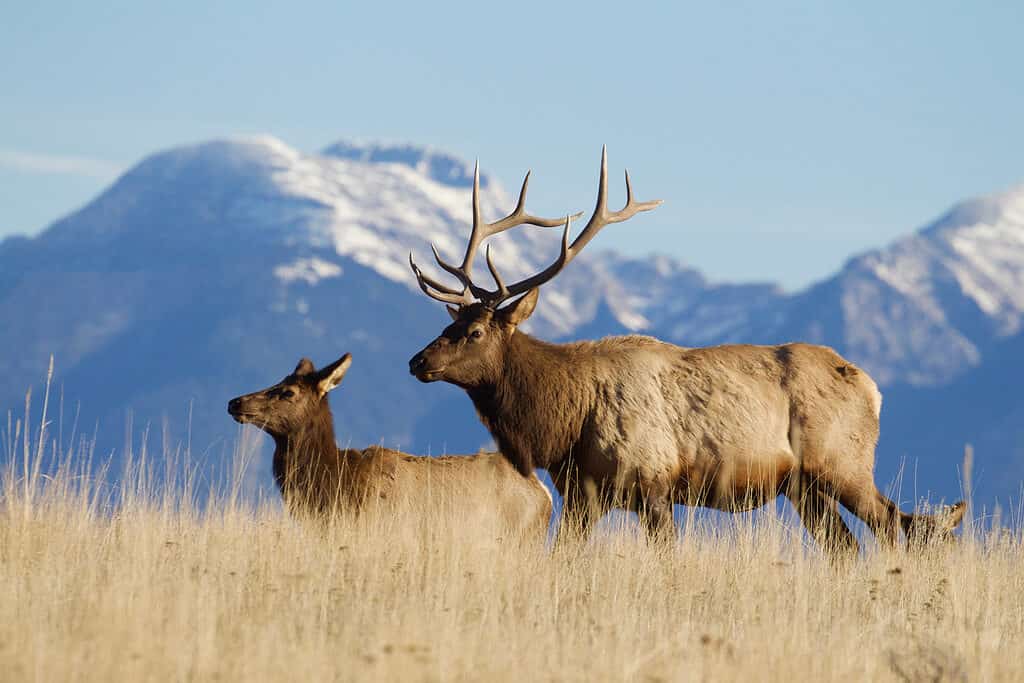
The record for the largest American elk caught in Idaho belongs to a gentleman named Peter J. Orazi Jr.
©Tom Reichner/Shutterstock.com
What is the Largest Elk Caught in the US?
An Idaho resident also holds the world record for the largest elk. However, he did not kill it in his home state. Denny Austad was hunting in south-central Utah in 2008 when he spotted the spectacular animal. Its antlers had 9 points on one side and 14 on the other. The antler measurement totaled 478-5⁄8 inches. And Austad’s official score was 499-3⁄8 inches.
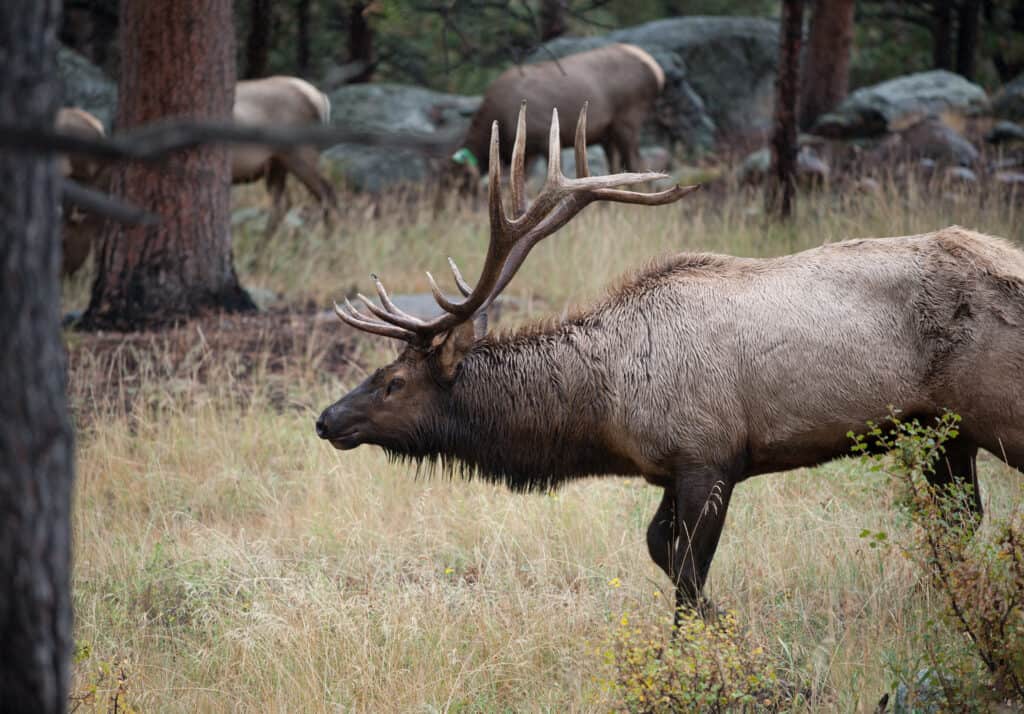
Bull elk developed large sets of antlers.
©Tony Campbell/Shutterstock.com
The photo featured at the top of this post is © Tom Reichner/Shutterstock.com
Sources
- Mail Tribune, Available here: https://www.mailtribune.com/fishing/2009/01/08/world-record-american-elk-taken-on-public-land-in-utah/
- National Geographic, Available here: https://www.nationalgeographic.com/animals/mammals/facts/elk-1
- Go Hunt Idaho, Available here: https://www.gohuntidaho.org/species/elk/#:~:text=Thanks%20to%20Idaho's%20diverse%20habitats,meadows%2C%20or%20thick%20timbered%20ridges
- Idaho Department of Fish and Game, Available here: https://idfg.idaho.gov/hunt/records
- Boone and Crockett, Available here: https://www.boone-crockett.org/idaho-state-big-game-records
FAQs (Frequently Asked Questions)
Which state has the best elk hunting?
If you want the best shot at filling your elk tag, head to Colorado. The largest elk herd in the nation lives in the western state.
Which US states have elk?
You may see elk in the entire American west, seven provinces in Canada, Minnesota, Arkansas, Wisconsin, Tennessee, Pennsylvania, Michigan, North Carolina, Missouri, West Virginia, Kentucky, and Virginia.
How many elk live in the United States?
There are approximately one million elk living throughout the United States.
Thank you for reading! Have some feedback for us? Contact the AZ Animals editorial team.



